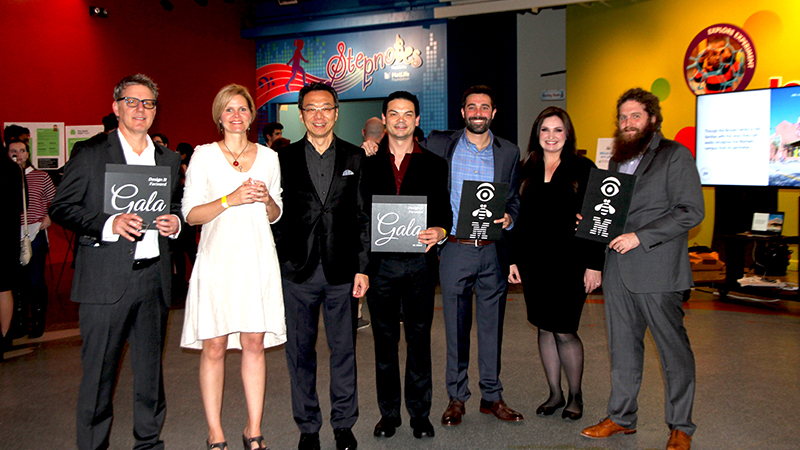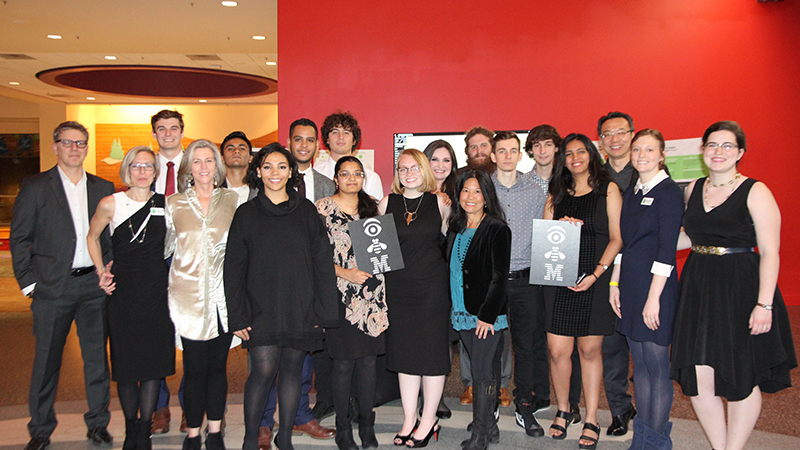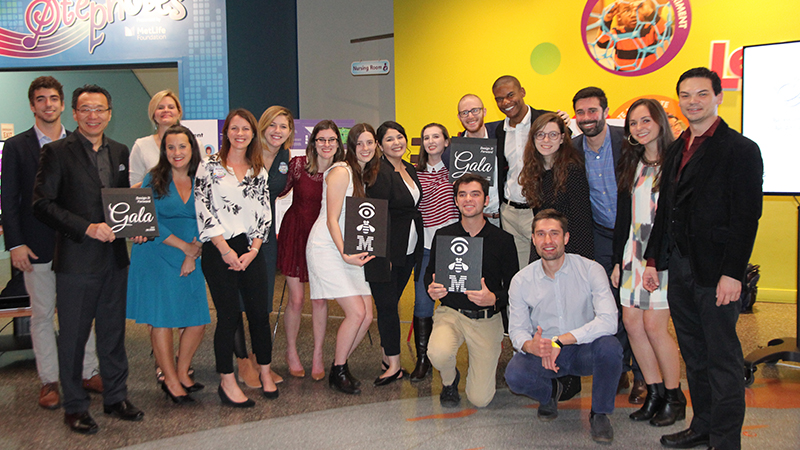Enterprise Design Thinking For Community Good

On a chilly Friday night in November, students and faculty from the College of Design and representatives from IBM, Marbles Kids Museum, and The Green Chair Project gathered at Marbles Kids Museum in downtown Raleigh for the Design It Forward Gala. This event was the celebration of a semester of interdisciplinary collaboration between the groups and an opportunity for students to showcase their work.
This was the second year that Professor and Department Head of Graphic Design and Industrial Design Tsai Lu Liu has partnered with Steve Kim, design director at IBM Blockchain, and several IBM employees to facilitate the interdisciplinary course Design It Forward. In the course, students were challenged to develop user-centered design solutions for nonprofits through the lens of enterprise design thinking. This year, the team collaborated with Marbles Kids Museum, a nonprofit children’s play-based learning museum, and The Green Chair Project, a Wake County nonprofit organization that provides home furnishings to individuals who have transitioned from experiencing homelessness or disaster and have secured sustainable housing.

“Enterprise design thinking,” Steve explains, “is a whole new space around how to really take design thinking and focus on users to come up with different ways and different experiences to solve problems.” Students used this approach to develop real-world applications to aid nonprofit groups in achieving their missions. At the gala, each of the student teams showcased their findings using large monitors, journey maps, posters, phased implementation timelines, and actual prototypes.
“Enterprise design thinking is a whole new space around how to really take design thinking and focus on users to come up with different ways and different experiences to solve problems.”—Steve Kim
“This is a chance for students to work within interdisciplinary teams, not just design, but mechanical and industrial engineering, and business students. Additionally, to have expertise from IBM and collaboration from community partners like Green Chair and Marbles, makes for an excellent experience that goes beyond the classroom,” emphasizes Liu. “The solutions developed by the student teams will be implemented, and their hard work will make a difference that they can be proud of.”
“Taking into context what the nonprofit does, what their mission is, and understanding their audience, then incorporating this into the design process has been so different from what I’ve done in the past,” says Jecori Owens, a senior in industrial design. “Working with IBM was such an opportunity. Getting exposure to their perspective of what design thinking is and being able to incorporate that into my design process was great for creating solutions for Marbles.”
Kevin Schultz, experience designer for IBM Design, and Kim Holmes, design lead for Watson Health, were guiding the Marbles team. Shultz says that lessons learned from last year’s Design It Forward course where implemented to improve this experience—“There were more students and more disciplines covered this year, which was great, and we also had two nonprofits compared to last year having three.” He adds that “getting the students involved in the mission of the organization and not knowing what fun surprises they would find is exciting. Once the students start to [understand the mission], this becomes powerful.”
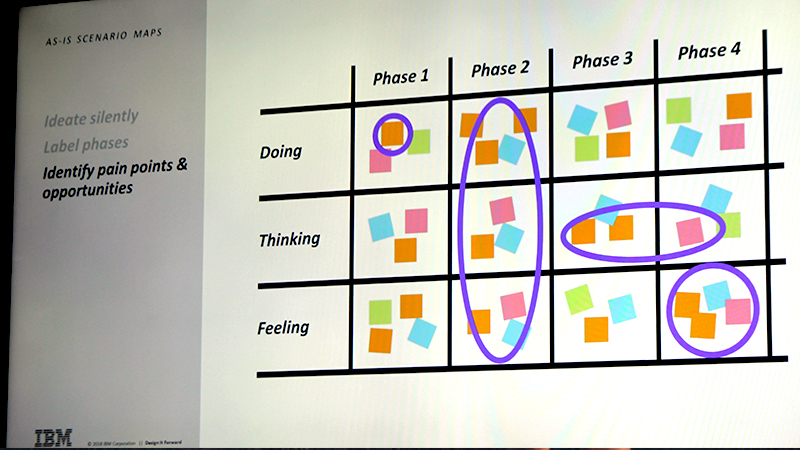 Sally Edwards, president and CEO of Marbles Kids Museum, has worked with the College of Design before and recognizes the important role design plays in the museum. “We design experiences,” Edwards says. “We incorporate a lot of graphic design in everything we do, and there is no better talent pool than the College of Design.”
Sally Edwards, president and CEO of Marbles Kids Museum, has worked with the College of Design before and recognizes the important role design plays in the museum. “We design experiences,” Edwards says. “We incorporate a lot of graphic design in everything we do, and there is no better talent pool than the College of Design.”
Working with the nonprofits, IBM, and the interdisciplinary student mix was one of the reasons Sarah Trinkle, a junior in industrial engineering, took this course. She explains that “your first experience working with others from outside your discipline shouldn’t be when you step into the real world. That would be a big culture shock.” Trinkle expresses that much of the challenge can be the terminology and the process used by others. “The design students think in such a different way from engineers, and the process they go through is small steps that I wouldn’t think of. As industrial engineers, we can be product centered while the design students are user-centered.”
“I don’t think you can overstate the importance of students being exposed to real-world opportunities, to understand real-world collaboration that happens in companies” —Sally Edwards
“I don’t think you can overstate the importance of students being exposed to real-world opportunities, to understand real-world collaboration that happens in companies,” confirms Edwards. “One thing that the IBMers stressed is you don’t design in a box; you design to meet the needs of the identified users by marketing.” She further adds, “the fact that this collaboration was multidisciplinary is brilliant and really helped drive home that point, and it certainly is how we work here at Marbles.”
Jackie Craig, executive director and co-founder of The Green Chair Project, was “blown away” by the presentations and outcomes derived by the students. This opportunity came at a pivotal time for Craig’s organization, which has plans to double their impact on the community and beyond.
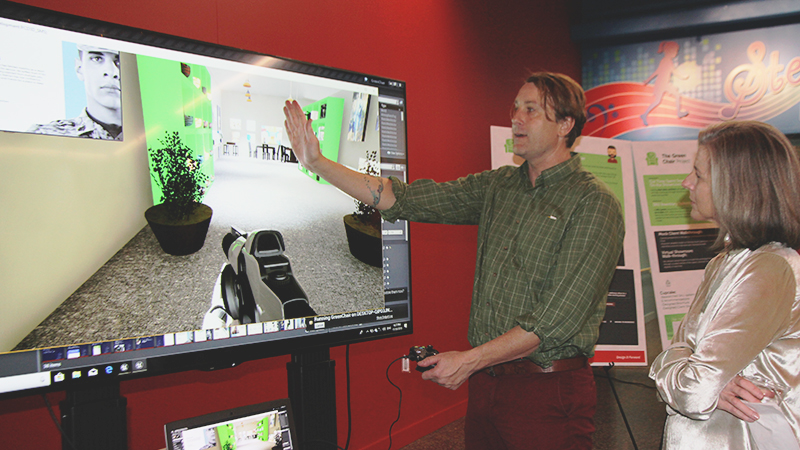
The Green Chair Project’s vision is to scale 20 percent over the next few years and, in planning for this growth, had several key action items that were part of the studio prompt. The student team supporting The Green Chair Project developed solutions that addressed each of these needs. “The team came up with a physical redesign of our showroom,” says Craig. “They also developed a brochure and a check-in process, which will help clients gain an understanding in what they are about to experience. And they developed a way we can serve clients without them being physically in the showroom,” which is helpful as some clients served by The Green Chair Project have disabilities or may not reside in Wake County. “This virtual experience is important so clients can still have choices, and this imparts a feeling of dignity in their process,” adds Craig, who explains this is essential to their mission.
Looking back on the semester, Steve believes that this collaborative experience has layered values for students, participating IBM employees, the nonprofits, and the community. “This class gives IBMers the chance to show their expertise that they learned at IBM… and it shows how IBM supports not only what we do within the company, but also with outreach to nonprofits and to the students to help prepare them for the corporate world.”
IBM Team:
- Brian Burnette, Design Lead IBM Storage
- Kim Holmes, Design Lead, Watson Health
- Steve Kim, Design Director IBM Blockchain
- Zack Nilsson, User Research Watson Finance
- Jillian Quiller, UX/Visual Watson Finance
- Kevin Schultz, Experience Designer IBM Design
- Categories:
